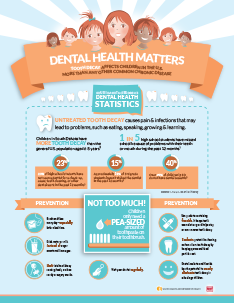An Extensive Analysis Of Invisalign And Traditional Braces: A Comparison
An Extensive Analysis Of Invisalign And Traditional Braces: A Comparison
Blog Article
Material Develop By-Bekker Trevino
When faced with the decision between Invisalign and standard dental braces, you might ask yourself which alternative straightens much better with your way of life and preferences. The option involves more than just the visual charm; it explores variables like therapy period, comfort, and long-term dental health effects. Think about the impact each choice may carry your everyday routine and positive self-image. As we explore the detailed comparison, you'll get understandings right into the nuances that make these orthodontic therapies unique and discover which one may be the better fit for you.
Materials and Building
When comparing Invisalign to standard dental braces, the materials and building differ significantly. Invisalign consists of clear, smooth plastic aligners personalized to fit your teeth. These aligners are practically undetectable, making them a prominent option for those seeking an extra very discreet orthodontic therapy.
On the other hand, standard braces involve metal braces that are glued to your teeth. These brackets are after that attached by cords and elastic band, using pressure to slowly change your teeth into the wanted position.
The building of Invisalign aligners permits a more comfy fit contrasted to typical braces. Recommended Web page to your cheeks and gums, which is a common issue with steel brackets and wires. In addition, Invisalign aligners are detachable, making it easier to comb and floss your teeth with no blockages.
In contrast, conventional dental braces are fixed onto your teeth, requiring additional treatment and time for proper maintenance.
Upkeep and Oral Hygiene
The maintenance and oral hygiene methods vary between Invisalign and conventional braces because of their special design and building.
With Invisalign, you can get rid of the aligners when eating or cleaning your teeth, enabling you to preserve your normal dental health regimen without any obstructions. It's important to brush your teeth after consuming before placing the aligners back on to protect against food fragments from obtaining caught and causing decay.
On the other hand, typical braces require added interest to keep your teeth tidy. Food fragments can quickly get embeded the braces and wires, resulting in plaque build-up and prospective tooth decay. You'll need to utilize special tools like interdental brushes or floss threaders to tidy between the cables and brackets properly.
Regular oral check-ups and cleanings are essential to ensure that your dental hygiene remains in top condition while wearing standard dental braces.
Presence and Aesthetic appeal
Exposure and appearances play a substantial duty in the contrast in between Invisalign and standard dental braces. When it comes to appearance, Invisalign offers a clear benefit over conventional braces. Invisalign aligners are basically invisible, making them a popular selection for those who prefer a more very discreet orthodontic therapy option.
Unlike the obvious steel brackets and wires of traditional braces, Invisalign aligners are transparent and assimilate with your natural teeth, permitting you to smile confidently throughout your treatment.
Conventional dental braces, on the other hand, are much more conspicuous as a result of their metal elements. While pain after root canal may choose vivid bands to customize their braces, others may feel uneasy regarding the presence of these orthodontic devices. The popular appearance of standard dental braces can sometimes impact a person's self-confidence, particularly for adults in professional settings.
Verdict
To conclude, when picking in between Invisalign and standard braces, consider your lifestyle and choices. Invisalign uses a very discreet and comfy option with very easy maintenance, while conventional dental braces give colorful personalization however might influence self-esteem.
Ultimately, the choice must be based on what works best for you in regards to aesthetic appeals, convenience, and convenience. Ensure to consult with your orthodontist to establish the most appropriate therapy for your individual needs.
